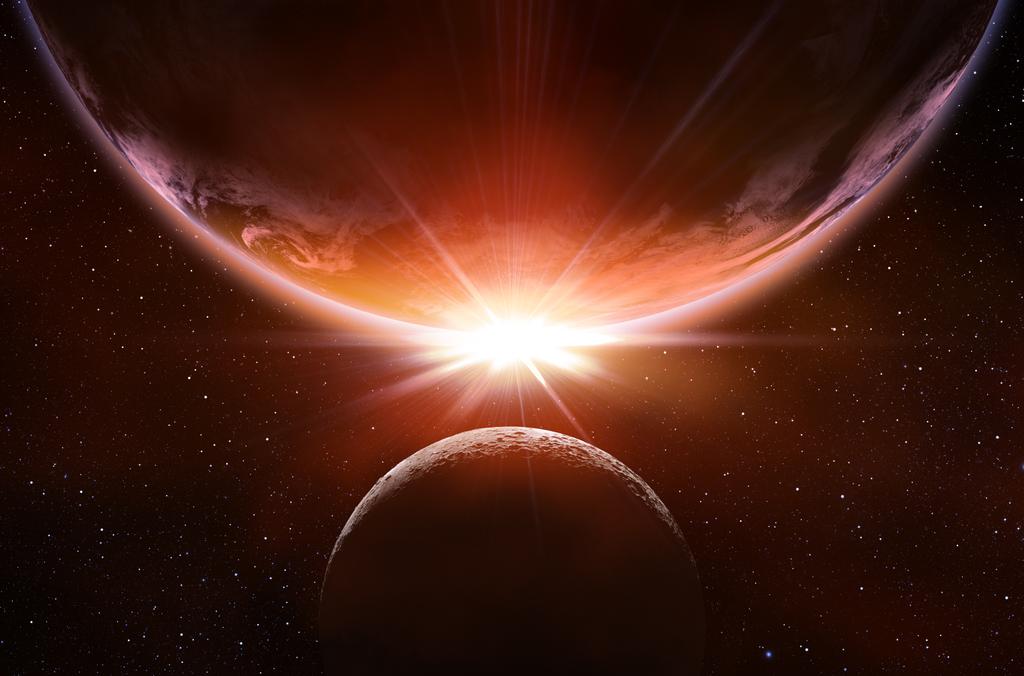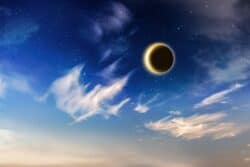Looking up at a solar eclipse triggers a mix of awe and caution, often accompanied by a flurry of myths about its dangers.
The truth? While staring at the sun can indeed harm your eyes, the radiation during an eclipse isn’t the villain here.
As the moon cozies up between us and the sun, it blocks most of the harmful rays, leaving just a wisp of the sun’s corona peeking through—a million times fainter than the sun’s regular glare. So, no, you won’t get a sudden blast of harmful radiation during an eclipse.
And, for expecting moms, it’s a relief—there’s zero evidence linking these events to pregnancy complications. Oh, and about that food poisoning rumor?
Solar Eclipse Quiz
Test your Solar Eclipse knowledge with these quick 5 fun multiple-choice questions, which offer a fascinating insight into the celestial ballet of the sun, moon, and Earth.

Pure coincidence. The sun’s corona, that ethereal halo that gets its moment to shine during an eclipse, is not out to get us either.
The Danger of Solar Eclipse Radiation
Staring directly at the sun during a total solar eclipse can cause retinal damage, but instinctually looking away quickly helps protect your eyes from harm.
The sun emits a vast amount of light, including ultraviolet (UV) radiation, which can be harmful to your eyes.
The moon’s position during an eclipse blocks most of the sun’s light, reducing the risk of damage. However, it’s crucial to remember that the corona, the outer layer of the sun, emits only electromagnetic radiation, which is a million times fainter than the sun’s light and doesn’t cause blindness.
This misconception stems from the belief that the sun’s light and rays are dangerous or different during an eclipse, but this has been debunked.
Therefore, there’s no additional radiation harm during a solar eclipse, and looking away instinctually helps keep your eyes safe.
Eclipse-Related Pregnancy Complications
Eclipse-related pregnancy complications don’t exist and have no scientific basis. It’s important to debunk superstitions and provide factual information about the effects of solar eclipses on pregnant women.
Solar eclipses are an exceptional celestial event that occurs when the moon passes between the Earth and the sun, blocking the sun’s light. While it’s natural for humans to be curious and look at these phenomena, there’s no evidence to suggest that solar eclipses have any harmful effects on pregnant women or their unborn children.
In fact, the radiation emitted during a solar eclipse is millions of times fainter than that of a typical human instinctual response. Therefore, pregnant women can rest assured that watching a solar eclipse poses no risk to their health or the health of their baby.
The Myth of Food Poisoning During an Eclipse
There is no scientific evidence to support the myth that food poisoning occurs during a solar eclipse. While there are many myths and common misconceptions surrounding eclipses, this particular claim lacks any scientific basis.
It’s important to understand that watching a solar eclipse doesn’t have any direct effect on food safety or the potential for food poisoning. Fearful stories about harmful radiation during eclipses aren’t supported by scientific explanations.
Accidental food poisoning during an eclipse is simply a coincidence and shouldn’t be attributed to the eclipse itself. Eclipses aren’t harbingers of something bad about to happen in relation to food safety.
Therefore, there’s no need to worry about the safety of consuming food during a solar eclipse.
The Truth About the Sun’s Corona During an Eclipse
When it comes to understanding the sun’s corona during a solar eclipse, it’s crucial to dispel misconceptions and focus on the scientific facts. Contrary to popular solar eclipse myths, the sun’s corona isn’t harmful to observe.
The corona is the sun’s outer atmosphere, located above the surface of the sun. It’s composed of ionized gas, and its temperature is much higher than that of the sun’s surface.
During a solar eclipse, the moon blocks the sun’s light, revealing the corona as a luminous ring of pale, ghostly green coronae look. This exceptional celestial event taking place allows scientists to study the corona in detail, providing valuable insights into the sun’s interior where nuclear fusion occurs.
Rest assured that observing the sun’s corona during an eclipse doesn’t pose any harmful effect and wouldn’t cause blindness.





